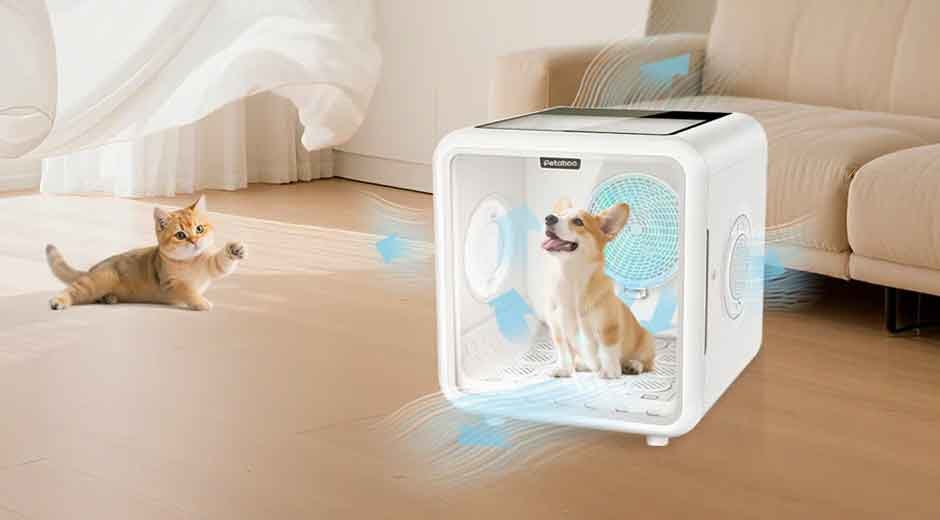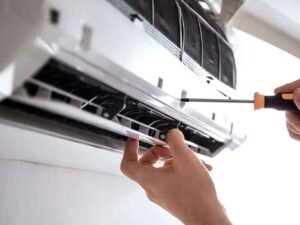For dog owners, rainy days often bring a familiar mix of dread and dirty floors. While your pup may enjoy romping through puddles and sniffing the damp breeze, you’re often left to deal with the aftermath—mud-caked paws, dripping fur, and a home that quickly starts to smell like wet dog.
Fortunately, with the right approach, you can tackle wet weather challenges efficiently and keep your dog clean, dry, and happy without sacrificing your home’s cleanliness. In this guide, we’ll explore smart techniques to handle soggy dogs indoors, from drying muddy fur to managing sudden downpours, and even training your dog to make cleanup easier.
Understanding the Rainy Day Challenge
Rain doesn’t just mean wet dogs—it often means long walks cut short, muddy pawprints across your floors, and a higher risk of skin issues or discomfort for your pet. Waterlogged fur can trap bacteria, irritants, or even tiny parasites. Wet paws can lead to slippery floors and unexpected injuries. Worse still, many dogs don’t enjoy being dried off, which can turn even a quick cleanup into a stressful struggle.
That’s why it’s important to have a consistent rainy-day routine, paired with the right drying methods and tools. With a little preparation, you can turn these gloomy days into a manageable—and even bonding—experience for both you and your dog.
Setting Up a Drying Station Near the Entrance
One of the most effective ways to control rainy-day mess is to prepare a designated drying area right by the door. This “mudroom” setup doesn’t have to be elaborate—just practical. Equip the area with a few essential items: super-absorbent towels, paw wipes, a waterproof mat, and a blow dryer or pet dryer if needed.
As soon as you return home, guide your dog directly to this spot. Start by wiping down paws and legs, gently removing mud and debris. If your dog’s belly or tail is soaked, use a warm, damp towel to loosen dirt, followed by a dry towel to absorb moisture.
Consistency helps your dog recognize this as a routine. Over time, many pets will naturally pause at the entrance, waiting for their cleanup before heading deeper into the house.
Drying Techniques for Wet Paws and Muddy Fur
Paws are often the muddiest part of a dog’s body after a rainy walk. Rather than scrubbing, use a patting motion with a microfiber towel to soak up moisture gently. Inspect between the toes and pads, where mud and gravel can easily hide. These areas are sensitive, so work slowly and reward your dog for staying still.
For damp fur, begin by towel-drying in the direction of the hair to prevent tangling. Use a second towel to catch any leftover dampness. If your dog has a thick coat or longer hair, towel-drying alone may not be enough. That’s when a drying solution—like a pet-safe hairdryer or dedicated drying unit—becomes invaluable.
Some pet owners have discovered the convenience of using a Petaboo ペット ドライ ルーム, a specialized drying enclosure that circulates warm air gently around your dog’s body. This hands-free approach helps dry even the undercoat thoroughly while keeping your dog calm and secure, especially after walks in heavy rain or unexpected downpours.
Managing Sudden Downpours and Emergencies
You won’t always be prepared when the rain starts. Sometimes a short bathroom break turns into a soaking disaster. When your dog comes back indoors unexpectedly drenched, avoid panicking—and avoid letting them bolt through the house.
Grab a towel and lead your dog calmly to your drying station. Start with their head and work downward. If they’re shivering, wrap them in a dry towel or blanket and let them sit calmly before beginning a more thorough drying process. Avoid using a human blow dryer on high heat or noisy settings—this can scare your dog and even damage their skin or fur.
In emergencies, having an extra towel in your car or near your entryway can be a game-changer. Many pet owners keep a small, waterproof dog raincoat in their walking bag as well, which can minimize the mess to begin with.
Training Your Dog for Indoor Drying
Drying a wriggly or anxious dog can be frustrating. That’s why a bit of training goes a long way. Teaching your dog simple cues like “wait,” “stand,” or “paw” can turn the drying process into a cooperative activity rather than a struggle.
Start with short sessions after dry-weather walks. Gently wipe their paws and reward them for staying still. Over time, increase the length of the sessions and introduce blow-drying in a quiet setting. Use low heat and speed settings, and always check your dog’s body language. Desensitizing them to the noise and sensation ahead of rainy season makes the process far easier later on.
If your dog has long or curly hair, consider trimming areas prone to matting during wet conditions—like the fur around their paws, underarms, and tail. This doesn’t just speed up drying—it also keeps their coat healthier during damp weather.
Protecting Your Home from Wet Dog Mess
While your dog might be your best friend, a trail of muddy pawprints definitely isn’t. Protect your flooring and furniture by laying washable rugs in high-traffic areas and using pet-safe furniture covers during the rainy season. Keep a designated towel or two by the door at all times, and wash them frequently to prevent odor buildup.
Air purifiers and dehumidifiers can also help reduce that unmistakable “wet dog” smell. And if your dog frequently comes in soaked, consider rotating between two sets of bedding to always have a clean, dry spot for them to relax.
Final Thoughts: Embracing the Rain
Rainy days don’t have to ruin your routine or your home. With thoughtful preparation, smart drying techniques, and the right tools, you can keep your dog clean, comfortable, and stress-free—even in the wettest weather.
Whether it’s using a drying station, investing in a pet-friendly drying system like the Petaboo ペット 用品, or simply training your dog to wait at the door, the goal is to make rainy-day cleanups smoother for both of you.
After all, your dog doesn’t care about the weather—they just want to be with you. With a little care and consistency, you can make every rainy walk something to enjoy, not endure.










